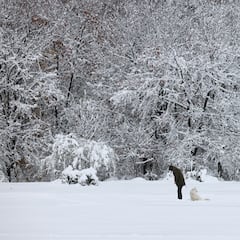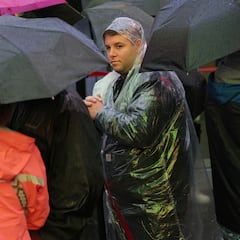What areas will receive lake-effect snow?
Cold winds from Canada moving over the Great Lakes will result in a weather phenomenon that threatens to dump 2 ft of snow on parts of the region.

Forecasters have warned of heavy snowfalls in the Great Lakes region, with parts of western and northern New York state forecast to get upwards two feet. The lake-effect snow could continue through to Thursday.
Forecasters are warning of “hazardous conditions” that will result from “poor visibility and deep snow cover on roads” that will make travel very difficult.
“The heaviest snow and most significant impacts are expected tonight through Tuesday, when snowfall rates exceeding 3″ per hour will occur within the heaviest snow bands.” said the National Weather Service in Buffalo.
Travelling around the Great Lakes will be a bit treacherous this week as the lake-effect snow machine cranks up. Snowfall of 2 ft+ is possible through the middle of the week downwind of Lakes Erie and Ontario. pic.twitter.com/CbJOLgeI6t
— National Weather Service (@NWS) November 27, 2023
What is the lake effect of snowfall?
Periods of heavy snowfall, caused by the lake effect, are often recorded in this part of the country and are due to the unique geographical location. As winter draws in cold air begins to move south from Canada, where it encounters Lake Erie and Lake Ontario.
The lakes’ waters are comparatively warm at this time of year and it heats the cooler gusts, causing the air to rise. This process, occurring over the lakes, forms clouds that cool rapidly as they rise.
Winds continue to agitate the clouds and tend to push them into the area east of the lakes, where they begin dumping enormous amounts of snow.
As the sun rises this morning, @NOAA's #GOESEast 🛰️ can see cloud streets streaming from the Great Lakes, which are bringing heavy lake effect snow to some downwind locations. #WinterStorm Warnings and #LakeEffect Snow Warnings are in effect for parts MI, OH, PA and NY today.… pic.twitter.com/cMIVKPnnEq
— NOAA Satellites (@NOAASatellites) November 27, 2023
Related stories
In addition to the snowfall, the strong winds that spark the phenomenon can also cause damage and make travel conditions particularly dangerous. The lake-effect snow warning remains in effect until 7 am Wenesday and drivers should be careful as wind speeds, which are expected to reach 35 mph, “will produce areas of blowing and drifting snow” and may reduce visibility considerably.
The Buffalo weather service has advised: “If traveling, be prepared for rapidly changing road conditions and visibilities.”

